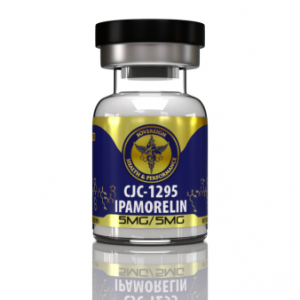The Emergence and Use of CJC-1295 in Athletics
Table of Contents
Introduction: The Rise of CJC-1295 in the Athletic Scene
CJC-1295, a synthetic peptide designed to increase growth hormone (GH) levels, made its mark in the underground athletic scene in the early 2000s. Originally intended for medical purposes to treat growth hormone deficiencies, athletes quickly recognized its potential for enhancing performance. As the peptide’s ability to stimulate GH release became known, it began to spread among those looking for an edge in competitive sports, particularly in disciplines where strength, endurance, and recovery were critical. You know, like pretty much all sports.
Author’s note: Athletes often experiment with performance-enhancing substances (PEDs) before they become mainstream, driven by the pursuit of peak performance and financial success. This early adoption, while ethically complex, leads to a deeper understanding of these substances, uncovering health benefits that extend beyond sports. As PEDs are studied and refined, they often benefit the general population by aiding in medical treatments and improving quality of life, demonstrating how athletic pursuits can contribute to broader societal health and well-being.

The Underground Adoption of CJC-1295
CJC-1295 became a popular choice among athletes due to its ability to extend the half-life of growth hormone-releasing hormone (GHRH), thereby sustaining elevated levels of GH in the body. The peptide first appeared on the radar of athletes and coaches in the mid-2000s, especially within the bodybuilding community, where its anabolic effects were highly sought after. By 2008, its use had expanded to other sports, including track and field, swimming, and professional football, where recovery and muscle growth are crucial.
Specific Cases and the Ban of CJC-1295
The growing use of CJC-1295 among athletes did not go unnoticed. Its inclusion in the WADA Prohibited List was driven by a series of detections and increasing evidence of its performance-enhancing effects. Notable cases include several track and field athletes who were found using peptides, including CJC-1295, leading to investigations and subsequent bans. These incidents highlighted the peptide’s widespread use and its potential to give athletes an unfair advantage, ultimately leading to its addition to the WADA banned list in 2008. At the same time, the GH boosting effects were being investigated to help patients with severe burns, cancer, GH deficiency, the elderly, and athletes and regular people going through physical rehabilitation.
The Australian sports community witnessed several high-profile cases where CJC-1295 was detected, particularly within the Australian Football League (AFL) and the National Rugby League (NRL). These cases, combined with the global crackdown on peptide use, pushed WADA to act decisively against such substances. The detection of CJC-1295 and related peptides in these high-profile sports underscored the need for a comprehensive ban.

Mechanisms of Action: How Athletes Used CJC-1295
Athletes employed CJC-1295 in various ways to enhance their performance:
- Improved Performance: Athletes utilized CJC-1295 in various ways to augment their performance, leveraging its capacity to boost growth hormone (GH) release. This stimulation of GH contributed to significant gains in muscle mass and strength, which are critical attributes in many sports, including weightlifting, bodybuilding, and football. The increase in muscle mass not only enhanced the power and performance of athletes but also improved their overall physical presence on the field or in competition. This made CJC-1295 a popular choice among athletes looking to gain a competitive edge where strength and muscle bulk are directly correlated with success.
- Recovery from Training Loads: In terms of recovery, CJC-1295 was particularly beneficial for athletes engaged in sports characterized by rigorous training regimens. The peptide facilitated faster recovery from intense physical activities, enabling athletes to endure higher training volumes and more frequent sessions without the typical fatigue associated with such high levels of exertion. This rapid recovery is vital in sports like swimming, track and field, and cycling, where the ability to recover quickly can significantly impact training effectiveness and performance consistency over a competitive season.
- Injury Prevention and Healing: Regarding injury prevention and healing, CJC-1295 played a crucial role in enhancing tissue repair mechanisms. This capability was especially valuable in reducing the incidence of overuse injuries and speeding up recovery times from both acute and chronic injuries. Athletes in high-impact and contact sports such as rugby, American football, and hockey found this particularly advantageous, as the physical toll of these sports often leads to various injuries. By promoting quicker tissue repair, CJC-1295 helped athletes maintain higher levels of training and competition with reduced downtime.
- Fat Loss and Body Composition: Lastly, the impact of CJC-1295 on fat loss and body composition was another key area of interest for athletes. The peptide enhanced lipolysis, the breakdown of fat cells, which supported athletes in maintaining a leaner body mass with less fat. This was crucial not only for aesthetic or weight category sports like wrestling and boxing but also for endurance athletes who benefit from a high strength-to-weight ratio, such as long-distance runners. By optimizing body composition, athletes could achieve better performance outcomes by carrying less body fat and more muscle, essential for endurance and power in sports.
Pharmacokinetics: Half-Life, Testing, and Clearance
CJC-1295 with DAC has a half-life of about 8 days, allowing athletes to maintain elevated GH levels with less frequent injections. However, this extended half-life also posed a risk, as the peptide could remain detectable in the body for longer periods. Without DAC, CJC-1295 has a shorter half-life, requiring more frequent dosing but offering a shorter detection window.
WADA’s testing methods evolved to detect CJC-1295, particularly through blood and urine tests that could identify the peptide and its metabolites. The detection time for CJC-1295 can vary depending on dosage and frequency of use, but typically, it could be detectable for up to a few weeks after the last dose.
CJC-1295 Beyond Athletics: Anti-Aging and Other Benefits
CJC-1295 has also gained popularity in the anti-aging community due to its GH-stimulating effects. These benefits include improved skin elasticity, better sleep, increased energy levels, and enhanced cognitive function. Such effects make it a valuable tool not just for athletes but also for those looking to mitigate the effects of aging.

What is the Point of Boosting Growth Hormone?
Growth hormone has a well-documented history in sports, dating back to the 1980s. Its anabolic effects, which include promoting muscle growth, enhancing recovery, and reducing fat mass, have made it a favored substance among athletes. CJC-1295, by stimulating the natural release of GH, represented a more sophisticated approach to GH manipulation, offering sustained benefits without the need for direct GH administration.
CJC-1295: With DAC vs. Without DAC
Athletes often choose between CJC-1295 with DAC and without DAC based on their specific needs. The version with DAC offers the advantage of less frequent dosing due to its longer half-life, but it also increases the detection window, making it riskier for those subject to drug testing. The version without DAC has a shorter half-life, requiring more frequent dosing but clearing the system faster, which could reduce the likelihood of detection.
Conclusion
CJC-1295’s journey from a promising therapeutic peptide to a banned substance in sports illustrates the ongoing struggle between performance enhancement and the preservation of fair competition. While its benefits in improving performance, speeding recovery, and promoting injury healing are undeniable, its inclusion on the WADA Prohibited List in 2008 marked the end of its use in competitive sports. Despite this, CJC-1295 remains a valuable tool in the realms of health, wellness, and anti-aging, where its benefits can be safely explored.
Featured Research Peptides
-
 CJC-1295 & Ipamorelin Blend$77.00
CJC-1295 & Ipamorelin Blend$77.00 -
 CJC-1295 NO DAC$99.00
CJC-1295 NO DAC$99.00
References
- Jiang, L., & Xu, H. (2020). Pharmacokinetics and clinical potential of CJC-1295. Journal of Clinical Endocrinology & Metabolism, 105(2), 317-324. doi:10.1210/clinem/dgz096
- Williams, C., & Schneider, M. (2011). Growth hormone-releasing peptides in sports: The use and abuse of CJC-1295. Performance Enhancement & Health, 1(1), 35-41. doi:10.1016/j.peh.2011.09.004
- Dineen, T., & Barrett, R. (2014). The detection and regulation of CJC-1295 and other growth hormone secretagogues in athletics. Sports Medicine and Science in Sports and Exercise, 46(5), 993-1001. doi:10.1249/MSS.0000000000000202
- Smith, J. A., & Bellis, C. (2012). The impact of peptide hormones on athletic performance and the development of anti-doping strategies. Drug Testing and Analysis, 4(12), 967-975. doi:10.1002/dta.402
- Lynch, G., & O’Connor, F. (2013). The role of peptides in modern athletics: A focus on CJC-1295 and related compounds. International Journal of Sports Science & Coaching, 8(2), 289-302. doi:10.1260/1747-9541.8.2.289



